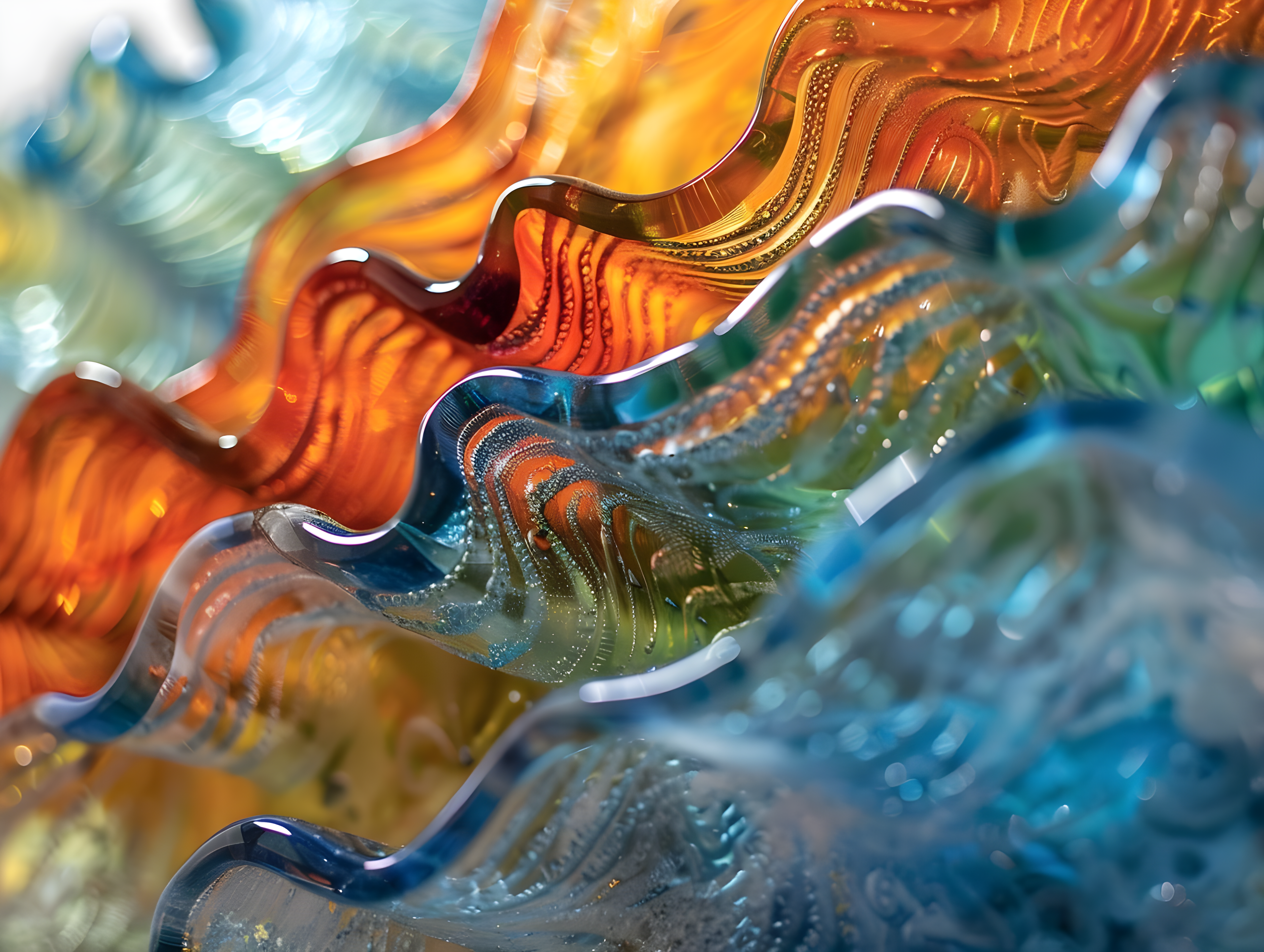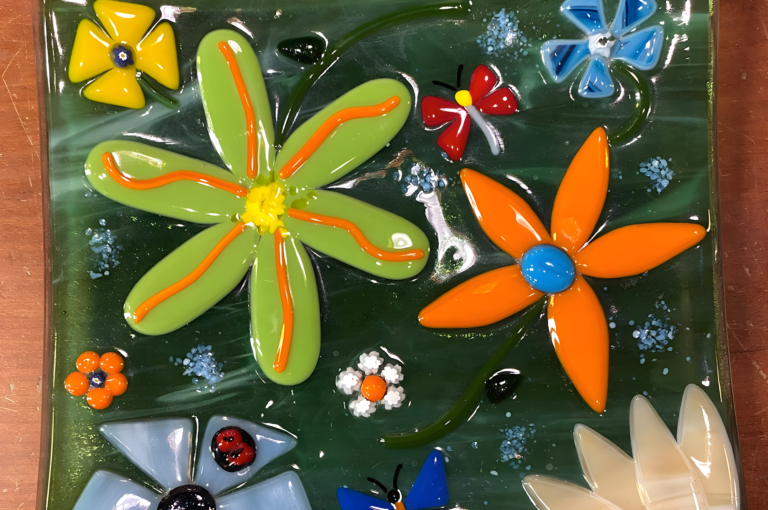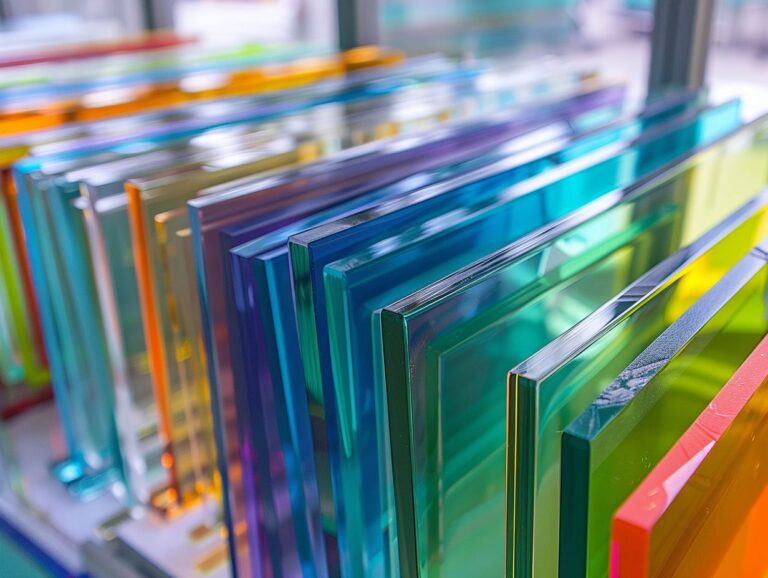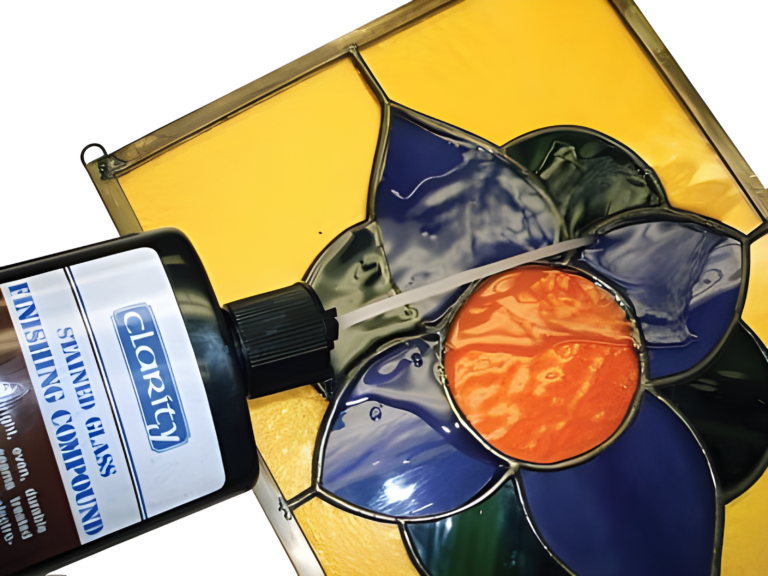Unlocking New Levels in Glass Fusing Art
Glass fusing is a captivating blend of artistry and precision, allowing creators to transform sheets of glass into stunning, fused designs. While mastering basic techniques like full fusing and slumping is a great start, advancing into more intricate methods unlocks new creative potential. Whether you want to explore layered patterns, textured surfaces, or three-dimensional forms, understanding these techniques will elevate your glass art to the next level. Let’s dive into the fascinating world of advanced glass fusing.
Glass fusing is more than a technique; it’s an evolving art form where heat and creativity merge into something truly unique.
Understanding Basic Glass Fusing Techniques
Glass fusing is the art of joining separate pieces of glass by heating them in a kiln until they bond at a molecular level. This technique allows artists to create anything from decorative panels and jewelry to functional glassware and sculptures. While advanced methods add complexity and detail, mastering the basics is crucial for achieving well-crafted, structurally sound pieces.
At its core, glass fusing relies on precise control of temperature and timing. Different firing schedules lead to different results, making it essential to understand how glass reacts under heat. For instance, heating glass to approximately 1100°F (593°C) causes it to soften slightly without fully melting, while raising the temperature to 1450°F (788°C) leads to a full fuse, where pieces merge seamlessly into a single smooth sheet.
Even a small temperature variation can dramatically change the outcome, making careful kiln programming a fundamental skill in glass fusing.
Basic techniques include full fusing, tack fusing, slumping, and draping. Each of these methods offers unique design possibilities:
- Full Fuse: The glass is heated until it completely melts and smooths out, resulting in a single, flat piece with no visible separation lines.
- Tack Fuse: A lower temperature is used to partially fuse pieces together, creating a textured surface with raised elements.
- Slumping: Glass is softened just enough to take the shape of a mold, allowing artists to form bowls, plates, or other curved objects.
- Draping: Similar to slumping, but with the glass «draping» over a mold to create flowing, organic shapes.
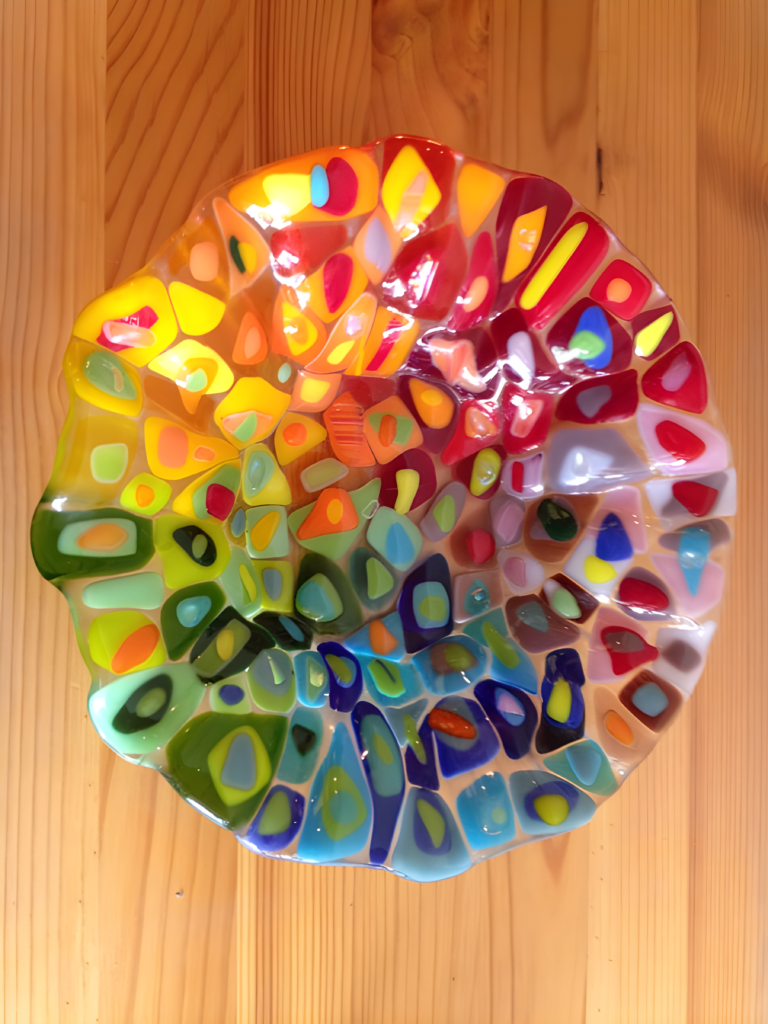
Each of these techniques requires careful temperature control and cooling (annealing) to prevent stress fractures and warping. The choice of glass also plays a role—COE (Coefficient of Expansion) compatibility ensures that fused pieces expand and contract at the same rate, preventing breakage.
Exploring Advanced Glass Fusing Techniques
As artists seek to expand their creative horizons, advanced techniques open doors to intricate textures, patterns, and sculptural effects.
Pattern Bars: The Art of Layering
Pattern bars involve stacking layers of glass, fusing them in a kiln, and slicing them into intricate designs. These bars can be incorporated into larger fused glass projects, offering unique visual depth and color transitions. Precision in cutting and layering is key to achieving detailed patterns.
Kiln Carving: Texture and Depth in Glass
This method utilizes refractory materials like fiber paper to create patterns in glass. By cutting designs into the material and placing glass on top, artists achieve raised or recessed effects once the glass fuses. Kiln carving introduces texture and dimension, enhancing the artistic appeal of the final piece.
Glass Painting: Bringing Color to Life
Specialized paints allow artists to add vibrant color and intricate detail to glass pieces before firing. Enamels, acrylics, and oil-based paints each offer unique finishes and require different firing temperatures. Layering and shading techniques create stunning effects, from soft gradients to bold, defined lines.
Glass Casting: Sculpting with Molten Glass
Unlike traditional fusing, glass casting involves pouring molten glass into molds to form three-dimensional structures. Molds can be made from plaster, clay, or silicone, shaping everything from abstract sculptures to detailed figurines. This technique requires careful temperature control to avoid cracks and achieve a flawless finish.
Advanced glass fusing is a journey of experimentation—where heat, timing, and technique combine to create extraordinary designs.
Achieving Intricate Designs in Glass Fusing
Artists looking to refine their craft often seek ways to introduce complexity into their designs. Several techniques allow for precision and artistic expression.
Stencils for Precise Patterns
Stencils provide a structured way to apply powdered glass or frit onto a base, resulting in consistent and detailed designs. Adhesive or reusable mesh stencils allow for repeated use, making them a favorite among glass artists.
Frit Painting: Layering for Depth
Using finely ground glass particles (frit), artists create textured and colorful compositions. By layering different sizes and colors, they achieve effects such as shading, gradients, and intricate detailing. This method adds visual richness and depth to fused glass pieces.
Glass Stringers: Adding Linear Elegance
Thin rods of colored glass (stringers) can be arranged in intricate patterns before firing. Artists use tweezers for precise placement, crafting delicate line work, geometric designs, or abstract arrangements. Once fused, these elements integrate seamlessly into the glass composition.
Glass Powders for Soft Textures
Finely ground glass powders offer another dimension of design possibilities. They can be sprinkled onto glass surfaces to create soft gradients, blended with mediums for controlled application, or used in stenciled patterns. The result is a subtle, painterly effect that enhances the artistic quality of the piece.
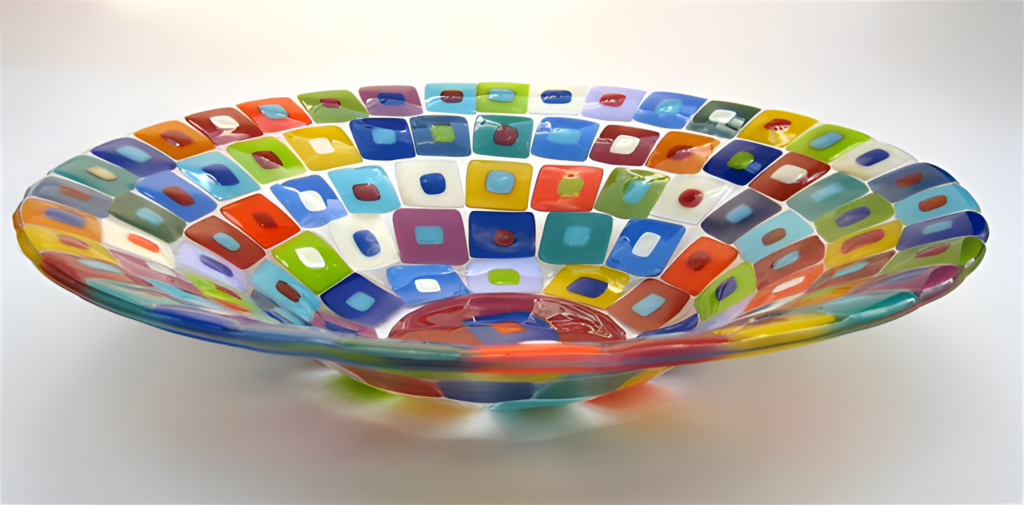
Essential Safety Measures in Glass Fusing
Working with glass and high temperatures requires strict safety precautions to ensure a secure and enjoyable experience. While glass fusing is an exciting and creative process, it also involves handling sharp materials, exposure to extreme heat, and potentially harmful fumes. Taking the right safety measures protects both the artist and the workspace.
Personal Protective Equipment (PPE)
Proper gear is essential when working with glass. Safety glasses shield the eyes from flying shards when cutting or breaking glass. Heat-resistant gloves help prevent burns when handling kiln-heated objects. A well-fitted dust mask or respirator is necessary when working with glass powders, frits, and enamels to avoid inhaling fine particles that can irritate the lungs. <blockquote>Glass dust is nearly invisible but can pose respiratory risks. Always wear a mask when grinding, cutting, or working with powdered glass.</blockquote>
Kiln Safety and Ventilation
Kilns reach extremely high temperatures, making proper operation critical. Always follow the manufacturer’s guidelines for setup, programming, and maintenance. Ensure that the kiln is placed on a heat-resistant surface, away from flammable materials. Never open a kiln at high temperatures, as sudden exposure to cool air can cause thermal shock, leading to cracks or even explosions.
Good ventilation is crucial, especially when firing materials that release fumes, such as enamels, paints, or certain adhesives. A well-ventilated workspace prevents the buildup of potentially harmful gases, creating a safer environment.
Handling and Cutting Glass Safely
Glass cutting and breaking require skill and attention. Use a quality glass cutter for clean, controlled scoring, and always cut on a stable surface. Running pliers help snap glass along the score line, reducing the risk of unpredictable breaks. Dispose of scrap glass properly in a designated container, as small shards can be hazardous if left on work surfaces or floors.
Fire Safety and First Aid
Since glass fusing involves high temperatures, having a fire extinguisher in the studio is a must. Keep a first aid kit handy for minor cuts and burns. In case of glass-related injuries, rinse cuts thoroughly and remove any tiny embedded fragments before bandaging. For burns, cool the affected area with lukewarm water—never apply ice, as it can cause further skin damage.
Preparedness is key. A well-equipped studio minimizes risks and allows you to focus on creativity rather than potential hazards.
By implementing these safety measures, artists can work confidently and efficiently while reducing the risks associated with glass fusing. Whether a beginner or an experienced glassworker, prioritizing safety ensures a long and enjoyable creative journey.
Glass fusing is an ever-evolving art form, and advancing your skills unlocks endless possibilities. Whether experimenting with intricate textures, layering techniques, or sculptural forms, each method contributes to a deeper understanding of glass as a medium. By embracing both technical expertise and creative intuition, artists can push the boundaries of what’s possible in fused glass art.


